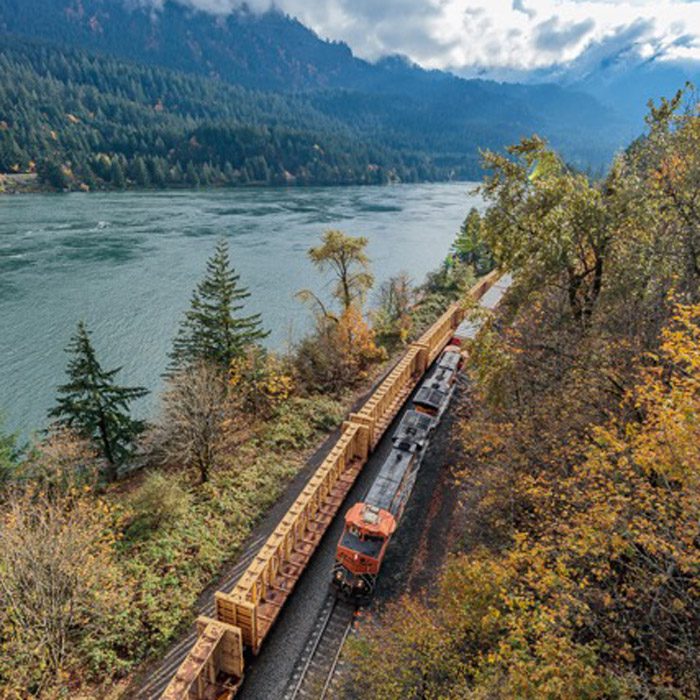It is highly disappointing that the University of Washington is associated with a study that is clearly being funded for and driven by groups opposed to fossil fuels. Opponents of coal exports are using bad science to create a concern over coal dust and advance their cause about coal exports, not because there is any valid concern about coal dust in the Pacific Northwest.
The truth is that BNSF has been at the forefront of coal dust research because we were the ones who first raised coal dust as an issue in 2005. BNSF does not believe that coal or any commodity should be allowed to escape from their shipping containers. This is why a decade ago we began extensive studies to address coal dust. All of our research and experience has shown coal dust was an issue near mine-loading points in the Powder River Basin in Wyoming and Montana.
We developed a coal loading rule that virtually eliminates any issues with coal dust – both at the mines and in the Pacific Northwest. Our coal loading rule is two-fold: Coal must be loaded so that it utilizes a “bread loaf” shape that reduces issues with wind and then an approved topping agent must be applied. The topping agents are like a glue and have been identified during our testing, and now through years of operations, as effectively controlling dust.
To add another redundant layer to an already effective mitigation program, we opened a state-of-the-art re-spray facility at our Pasco, Wash., yard this year. Now all unit trains of coal and petroleum coke traveling through Washington are sprayed with one of the approved topping agents, further enhancing our coal dust program. Information about our coal dust efforts, studies, and research are available online.
Correcting Misinformation
The objectivity of the study is suspect at best, particularly because nearly one-fifth of the total funding came from a $5,000 contribution from the Sierra Club, a strong opponent to coal exports. Interestingly, Professor Jaffe, the principal author of the coal dust study, told one reporter in San Francisco on the subject of coal dust “that it seems to be a non-issue.” In the same story, the reporter stated “there does not appear to be much coal dust in the air near the rail lines.“
Inaccuracies are found throughout the study. For instance, unit trains of petroleum coke are mislabeled as coal trains. The study points to two videos as allegedly showing coal dusting events. In a video dated August 2014, the train in question is carrying petroleum coke, but it is incorrectly identified as a coal train. There are also several unknowns regarding the videos. What were weather conditions like? What were other possible external sources of background dust?
To rely so heavily on videos with poor quality to support a scientific conclusion is another example of the political underpinnings of the study. This brings into question the validity of the methodology used to reach several of the conclusions in the study, including the so-called “super dusters” that they allege traverse the Gorge and other parts of our network. It is important to remember that all unit trains of petroleum coke and coal are now sprayed as they go through our Pasco facility and have been for nearly a year. Thus, the alleged findings in the 2014 study don’t reflect the additional steps BNSF has taken with its new re-spray facility.
Also, why were trains with low readings removed from the analysis? It would appear that measurements were tailored to help reach an outcome desired by the study’s funders. And how many trains were excluded with low CO2 readings? Events with low CO2 readings are valid unless there are problems with the instruments. This brings up questions about the datasets and findings. The study also uses instantaneous maximum values during train passages for particulates and CO2. The EPA does not regulate on instantaneous values, but rather on an hour, 12-hour, and 24-hour averages. There is simply no basis to say that a quick elevated particulate reading during a three-minute train passage will elevate daily or average particulate readings above EPA thresholds.
What the study also fails to consider is the fuel efficiency of freight rail. Trains move the same ton of freight more than three times as far as trucks per gallon of fuel, according to the Association of American Railroads (AAR). This efficiency produces more than 50 percent fewer CO2 emissions per ton mile than trucks.
Diesel emissions have been extensively analyzed, and are, in fact, regulated by the EPA. BNSF, which has the industry’s newest and most fuel-efficient fleet of road locomotives, is able to move one ton of freight 500 miles on a single gallon of fuel.
Monitoring by the Northwest Clean Air Agency found no evidence of harmful air pollution levels in more than a year’s worth of air-sampling data that the agency collected between February 2012 and September 2013. The Spokane Clean Air Agency stated: “After reviewing how coal dust is treated once it is loaded, Spokane Clean Air is fairly confident that this will not be an issue for local quality impacts. The potential for coal dust emissions is greatest at the point of loading and unloading, which is not occurring in Spokane County.”
The bottom line: This study, which was partly funded by the Sierra Club, is misleading. It is another attempt to drive headlines by individuals and groups that are opposed to coal exports and the use of fossil fuels.




